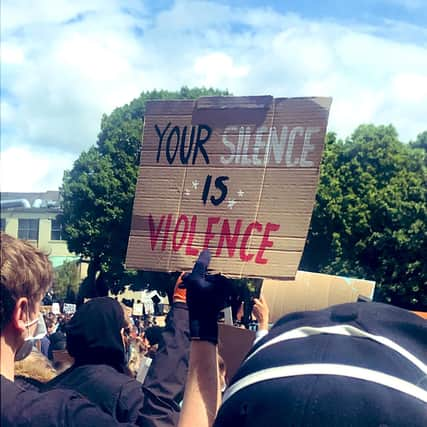From George Floyd, to the Black Lives Matter movement - how to discuss racism with your children


With that in mind, childcare platform Yoopies UK has put together a family-friendly guide for parents - sharing resources, advice, and tips to help children get their heads around everything that Black Lives Matter stands for.
“Racism and race is not a one-conversation topic, and our guide by no means contains all the answers,” said a spokesman for Yoopies UK.
Advertisement
Hide AdAdvertisement
Hide Ad“We simply hope to provide the foundations of good places to start and help empower families to work towards racial equality.
“It is written with a British perspective, with contributions from both white and BAME writers.”
The guide takes families on a journey through information, resources, and even the language to use when discussing: ‘what is the BLM movement?’ ‘Who was George Floyd?’ and ‘What is white privilege?’
An extract from the guide reads: ‘Perhaps, prior to the death of George Floyd, you viewed racism as something ‘of the past’ or ‘something that doesn’t happen here.’ When talking about the tragedy of George Floyd, it’s important to emphasise that racism hasn’t suddenly appeared from nowhere.
‘Your children might ask why so little was done before.
Advertisement
Hide AdAdvertisement
Hide Ad‘This may be a good time to teach children about prejudice and that we should never judge a person’s character by their physical appearance.
‘Often in our society, and consequently the policing system, there are presumptions of what a ‘dangerous’ person looks like, which has fueled many of these acts of police brutality.
‘We should remind our children that a person with a darker skin colour should not be associated with negative characteristics such as being dangerous or unkind, and that we should never judge a book by its cover.’
Later on, the guide refers to the importance of having these conversations about race as a family, even when they’re not comfortable, saying: ‘Recent events have underscored that parents and caregivers must play an integral role in ensuring children have an acute awareness of white privilege, racial bias, and racial hierarchies present in society and the ways in which we can combat racism.
Advertisement
Hide AdAdvertisement
Hide AdIt’s quite natural to feel uncomfortable as a parent when engaging in such discussions, especially when it’s not a topic that you’re used to talking about.
‘Often, we are so afraid of saying the ‘wrong thing’ that we don’t engage at all.
‘As a consequence, our children don’t learn about the racism that exists today, how to be open to criticism or how to reshape their views.
‘We can also make an active effort to encourage discussion on race.
Advertisement
Hide AdAdvertisement
Hide Ad‘If we immediately shut down our children’s remarks or comments on race, we risk making it into a taboo topic.
‘Invite children to actively see colour, to see culture, to see history, and to acknowledge that race has an impact on people’s life experiences.’